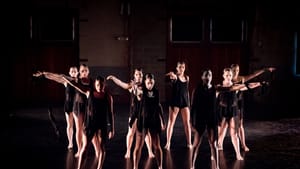Stay in the Loop
BSR publishes on a weekly schedule, with an email newsletter every Wednesday and Thursday morning. There’s no paywall, and subscribing is always free.
Girl power in dance
Project Moshen presents Woman

Project Moshen celebrated femininity, strength, and experiences unique to living in a female body with Woman, an update of its 2018 work, performed last week at Christ Church Neighborhood House. An all-female jazz dance company promoting gender equality through dance that appeals to a wide audience, Project Moshen is well-suited to explorations of gender identity.
But Woman mostly fell short of furthering women’s empowerment, adopting the outdated ideas and aesthetics of third-wave feminism at the expense of more current issues such as gender diversity, consent, reproductive justice, and violence against trans women and women of color. Nevertheless, executive and artistic director Kelli Moshen’s appealing choreography and the company’s strengths in technique and performance made Woman entertaining and sometimes moving.
Sexism and victory
The program began with "Asylum," performed by the repertory company from the Institute of Dance Artistry, where Project Moshen held a residency. Norah Myerow, Stella Resnick, Hannah Rozenbaum, and Anna Wojeck excelled in executing energetic movement that ranged from elegantly sinuous to percussively explosive. Their leaps and turns, nearly concealed by the quick tempo, were not as crisp. The sound system posed a greater distraction, with music much too loud throughout the show. I wished I had brought the earplugs that I usually need for concerts, not dance performances.
Next, Woman began its examination of female experiences through a series of themed scenes. Seemingly oriented to the male gaze, these mostly emphasized feminine strength and sexiness. The costuming (booty shorts and crop tops) contributed to this effect, and both the emcee and the program referred to the dancers as “girls,” not women. These missteps failed to reckon with the persistent sexism of a culture that still uses appearance and age to measure the value of girls and women, applying ableist, anti-fat, heteronormative, Eurocentric beauty standards that sexualize many from childhood then dismiss them in middle age.
Nevertheless, the choreography was a highlight throughout, making interesting and effective use of the space as well as changes in tempo, formation, and level. These features, and Woman’s themes, shone brightest in scenes with multiple dancers. For instance, “Strength in Numbers” featured an elevated-leg variation on the split roll, with dancers dropping two hands and one foot to the floor and pivoting in the air. The piece concluded with a dramatic pause as dancers stood with arms raised and hands fisted in gestures of strength and victory.
Silent screams
“Isolated” made clever use of blazers, folding chairs, and office props to reflect the alienating experience of office work. Alanna Campbell, Hannah Kieserman, Meghan Killian, Danielle McGilligan, Madison Miozzi, Alex Monte Carlo, and Rachael Murphy shared the stage and sometimes moved in sync. However, they seemed cut off both from each other and their inner selves as they mimed taking calls and performing repetitive tasks in pursuit of the next rung on the corporate ladder.
Props were less subtle in “Silenced No More,” which began with dancers wearing black fabric over their mouths and ended with them dropping these symbolic gags to the floor. The important message of this piece came across best in less sensational moments, like an opening scene linking trauma and voicelessness with loss of humanity. As dancers hunched their shoulders up and down while punching their thighs, they seemed more like animals than people. One by one, they pulled the gags from their mouths and contorted their faces in a silent scream.
No new ideas
Woman’s three solos featured solid dancing and touched on gender in ways not always as clear or powerful as in the group dances. The strongest was danced by McGilligan, an original member of Project Moshen giving her final performance. “In This Skin,” a meditation on body dysmorphia, portrayed a straight-sized woman disgusted with her appearance and trapped in an endless loop of self-criticism. McGilligan deftly captured these thoughts and feelings, but “In This Skin” at times struggled to maintain a narrative.
Campbell was terrific in “Working Girl,” a showcase for her energetic and precise dancing. Neither “Working Girl” nor “Conquer,” a solo well danced by Miozzi, added much to the conversation, though. Their main points—women can be strong, tough, and sexy!—were made elsewhere in Woman, and it’s hard to see these as fresh, new ideas in 2022.
Where dance falls short
Woman concluded with a high-energy group dance that reflected Project Moshen’s assets. “Still Standing” combined hip-hop flavor with the flair of a music video. An ode to resilience, this seemed a fitting final note, though Woman would be much stronger if it reflected current conversations about gender and activism related to it. This shortfall isn’t unusual in the dance community as a whole, which has much work to do in promoting women to leadership roles, increasing diversity of all kinds, and ending body shaming. Project Moshen’s Woman is fun if you can put these things out of your mind and feel uncomplicated nostalgia for 1990s girl power.
What, When, Where
Woman. Choreography by Kelli Moshen. Project Moshen. $35. April 8 and 9, 2022 at Christ Church Neighborhood House, 20 N. American Street, Philadelphia. (267) 585-4432 or projectmoshen.com.
Accessibility
Christ Church Neighborhood House is a wheelchair-accessible venue, but the cobblestones near its entrance may be a challenge for those with limited mobility.
Sign up for our newsletter
All of the week's new articles, all in one place. Sign up for the free weekly BSR newsletters, and don't miss a conversation.

 Melissa Strong
Melissa Strong